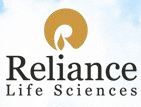预约演示
更新于:2025-05-07
Filgrastim biosimilar(Reliance Life Sciences Pvt Ltd.)
非格司亭生物类似药(Reliance Life Sciences Pvt Ltd.)
更新于:2025-05-07
概要
基本信息
非在研机构- |
权益机构- |
最高研发阶段批准上市 |
首次获批日期 印度 (2008-01-01), |
最高研发阶段(中国)- |
特殊审评- |
登录后查看时间轴
结构/序列
Sequence Code 4190

当前序列信息引自: *****
关联
1
项与 非格司亭生物类似药(Reliance Life Sciences Pvt Ltd.) 相关的临床试验NCT01441427
Enteral Granulocyte Colony Stimulating Factor and Erythropoietin Early in Life Increases Feeding Tolerance in Preterm Infants: A Randomized Controlled Trial
With preterm birth, the ingestion of amniotic fluid containing enterocyte trophic factors ceases abruptly. This likely predisposes them to villous atrophy feeding intolerance and necrotizing enterocolitis(NEC) once feedings are instituted.Granulocyte Colony-Stimulating Factor (G-CSF) and Erythropoietin (EPO) have important non-hematopoietic roles in human developmental biology. Among these roles, they have trophic actions on villous height and bowel length of the developing intestine.The aim of this study is to evaluate the efficacy of enteral recombinant human G-CSF and recombinant human EPO in prevention of feeding intolerance and /or NEC in preterm infants.
开始日期2010-01-01 |
申办/合作机构 |
100 项与 非格司亭生物类似药(Reliance Life Sciences Pvt Ltd.) 相关的临床结果
登录后查看更多信息
100 项与 非格司亭生物类似药(Reliance Life Sciences Pvt Ltd.) 相关的转化医学
登录后查看更多信息
100 项与 非格司亭生物类似药(Reliance Life Sciences Pvt Ltd.) 相关的专利(医药)
登录后查看更多信息
13
项与 非格司亭生物类似药(Reliance Life Sciences Pvt Ltd.) 相关的文献(医药)2011-12-01·Journal of Hematology & Oncology1区 · 医学
Effect of a structurally modified human granulocyte colony stimulating factor, G-CSFa, on leukopenia in mice and monkeys
1区 · 医学
ArticleOA
作者: Wenhong Jiang ; Yongping Jiang ; Yuchang Qiu ; Wei Dai
2006-04-01·Journal of Interferon & Cytokine Research4区 · 医学
Facilitation of Survival in a Rat Fulminant Hepatic Failure Model by Combination Therapy Using Recombinant G-CSF and Tacrolimus
4区 · 医学
Article
作者: Asahara, Toshimasa ; Aihaiti, Xuehelati ; Oishi, Koichi ; Hayamizu, Keisuke ; Yoshimitsu, Masanori ; Itamoto, Toshiyuki
2006-01-01·Circulation Journal3区 · 医学
Effect of Granulocyte Colony-Stimulating Factor Treatment at a Low Dose but for a Long Duration in Patients With Coronary Heart Disease
3区 · 医学
Article
作者: Minatoguchi, Shinya ; Watanabe, Sachiro ; Uno, Yoshihiro ; Nishigaki, Kazuhiko ; Takemura, Genzou ; Arai, Masazumi ; Misao, Yu ; Suzuki, Koji ; Nagashima, Kenshi ; Fujiwara, Hisayoshi ; Tei, Chuwa
100 项与 非格司亭生物类似药(Reliance Life Sciences Pvt Ltd.) 相关的药物交易
登录后查看更多信息
外链
| KEGG | Wiki | ATC | Drug Bank |
|---|---|---|---|
| - | - | - |
研发状态
10 条最早获批的记录, 后查看更多信息
登录
| 适应症 | 国家/地区 | 公司 | 日期 |
|---|---|---|---|
| 中性粒细胞减少 | 印度 | 2008-01-01 |
登录后查看更多信息
临床结果
临床结果
适应症
分期
评价
查看全部结果
| 研究 | 分期 | 人群特征 | 评价人数 | 分组 | 结果 | 评价 | 发布日期 |
|---|
No Data | |||||||
登录后查看更多信息
转化医学
使用我们的转化医学数据加速您的研究。
登录
或

药物交易
使用我们的药物交易数据加速您的研究。
登录
或

核心专利
使用我们的核心专利数据促进您的研究。
登录
或

临床分析
紧跟全球注册中心的最新临床试验。
登录
或

批准
利用最新的监管批准信息加速您的研究。
登录
或

生物类似药
生物类似药在不同国家/地区的竞争态势。请注意临床1/2期并入临床2期,临床2/3期并入临床3期
登录
或

特殊审评
只需点击几下即可了解关键药物信息。
登录
或

Eureka LS:
全新生物医药AI Agent 覆盖科研全链路,让突破性发现快人一步
立即开始免费试用!
智慧芽新药情报库是智慧芽专为生命科学人士构建的基于AI的创新药情报平台,助您全方位提升您的研发与决策效率。
立即开始数据试用!
智慧芽新药库数据也通过智慧芽数据服务平台,以API或者数据包形式对外开放,助您更加充分利用智慧芽新药情报信息。
生物序列数据库
生物药研发创新
免费使用
化学结构数据库
小分子化药研发创新
免费使用

